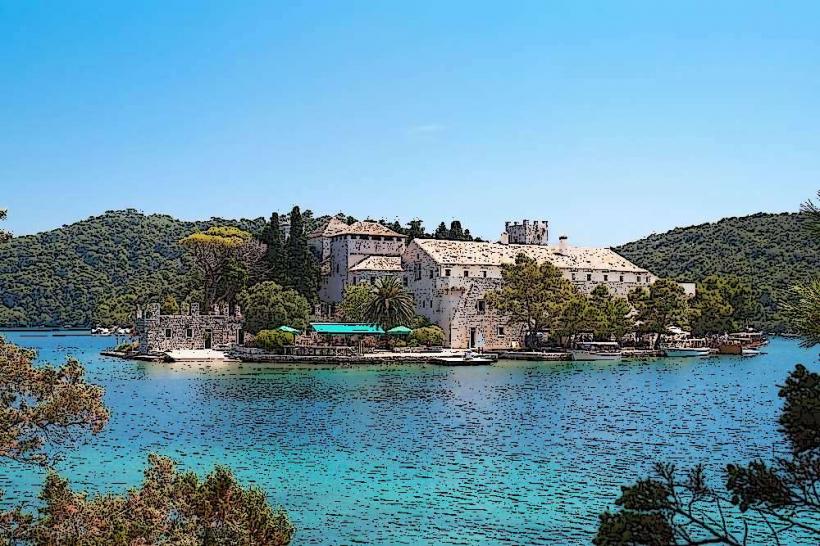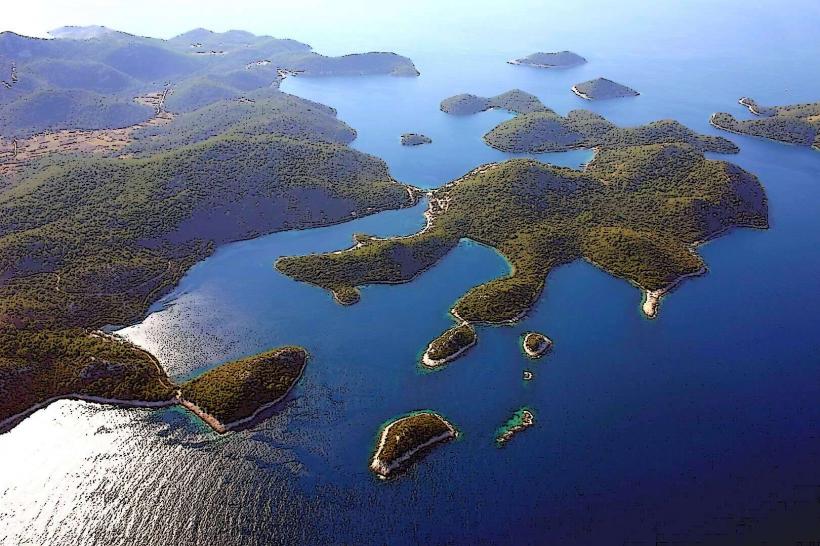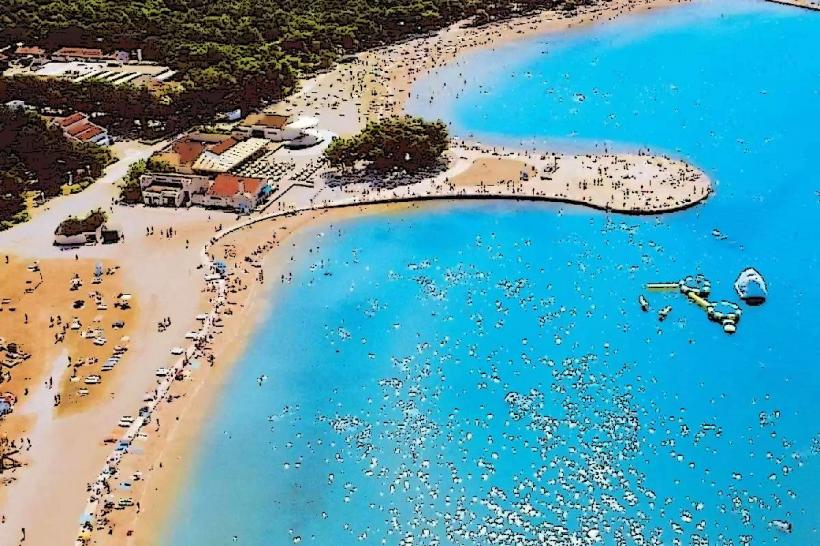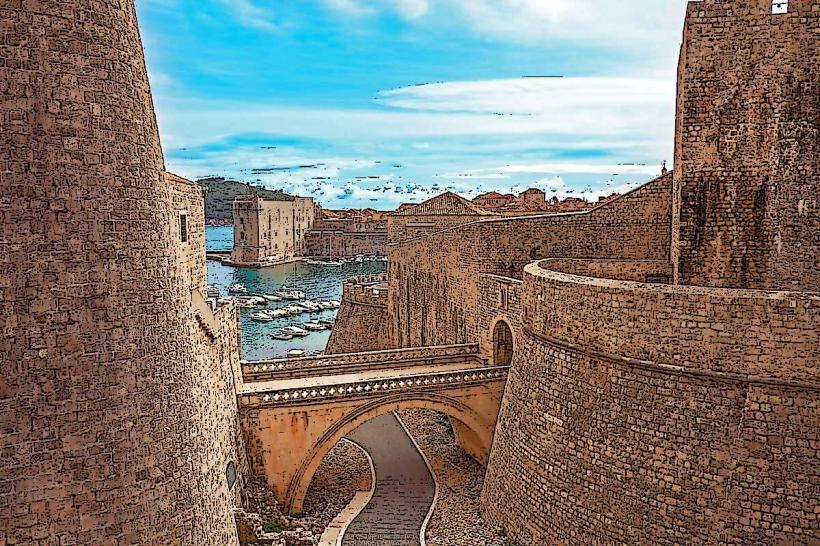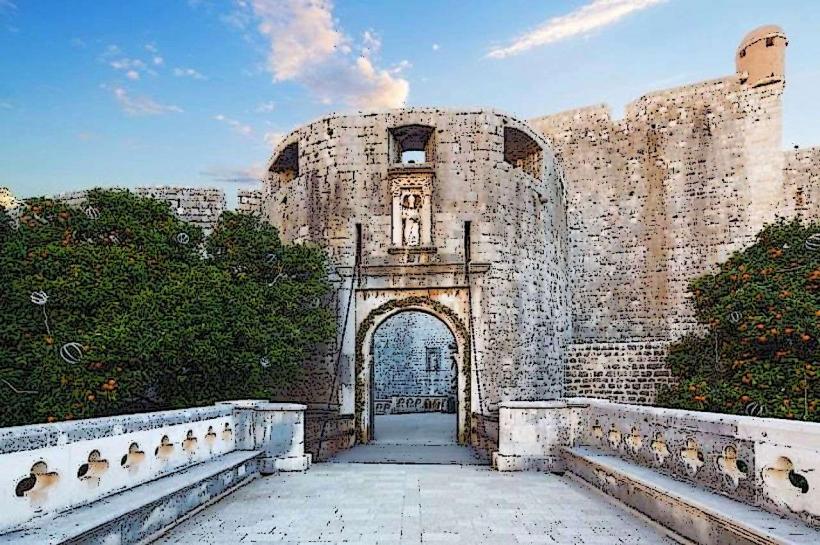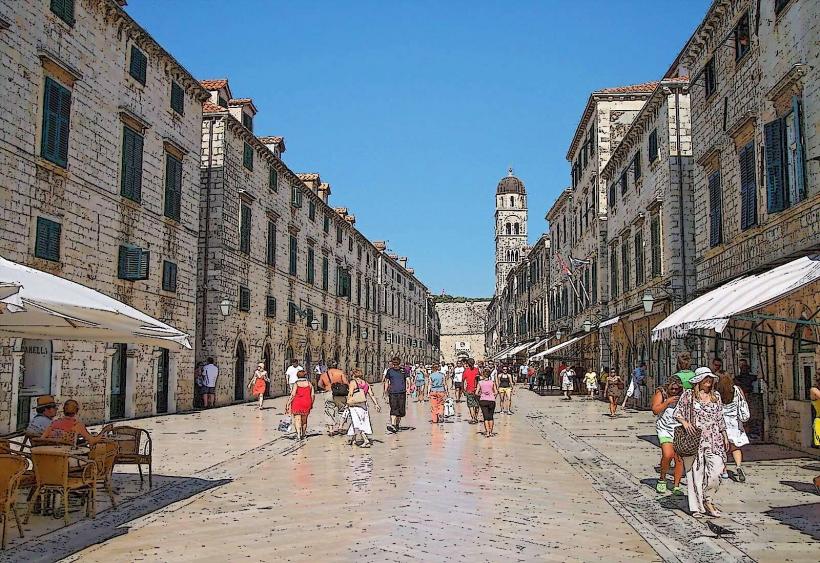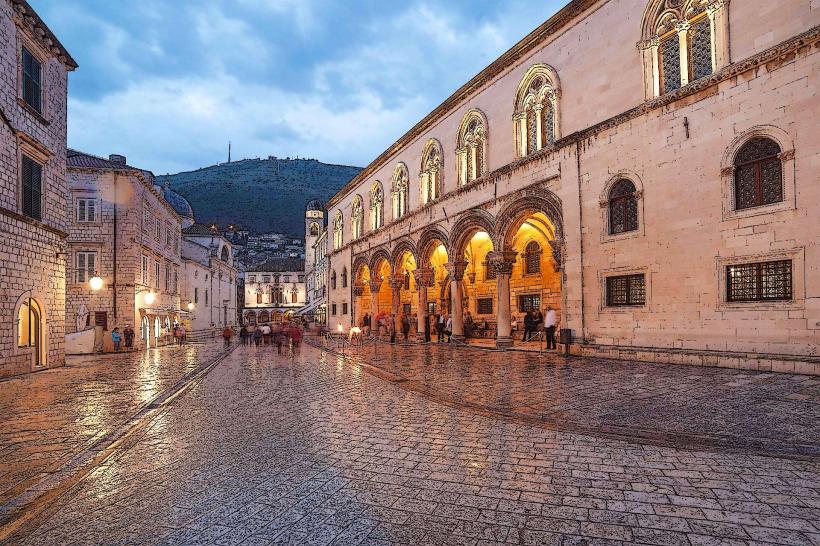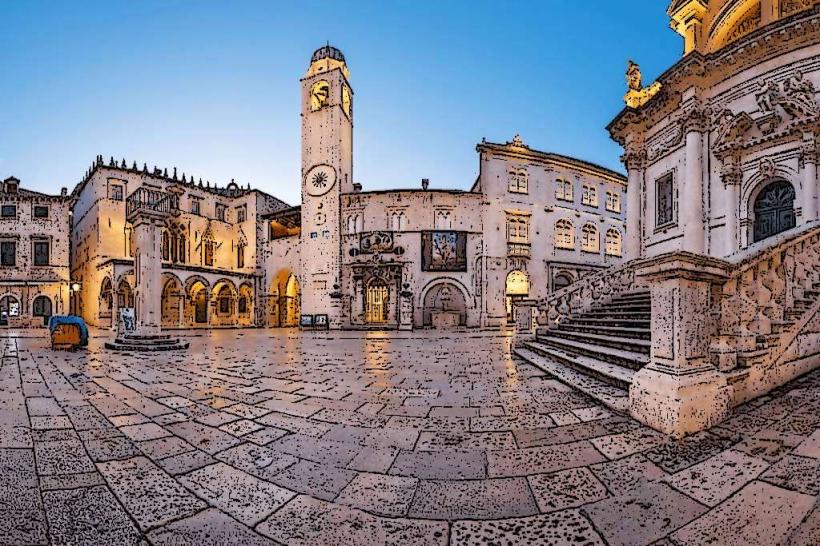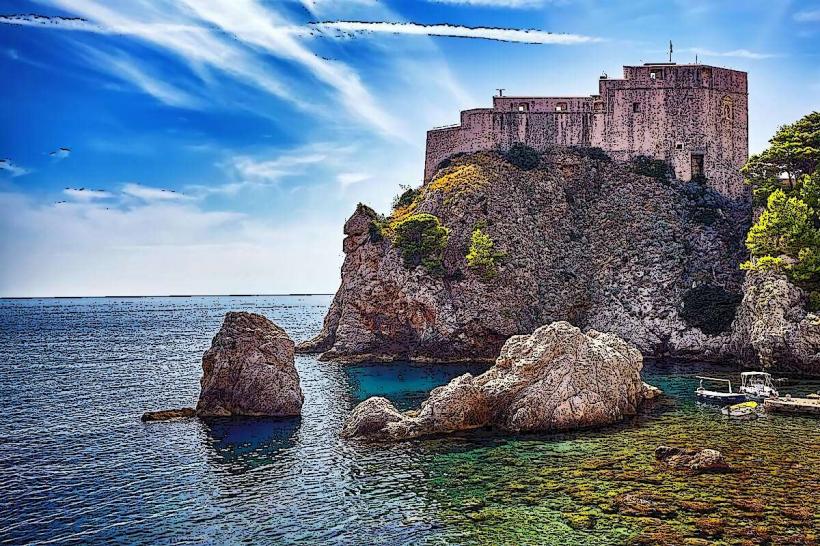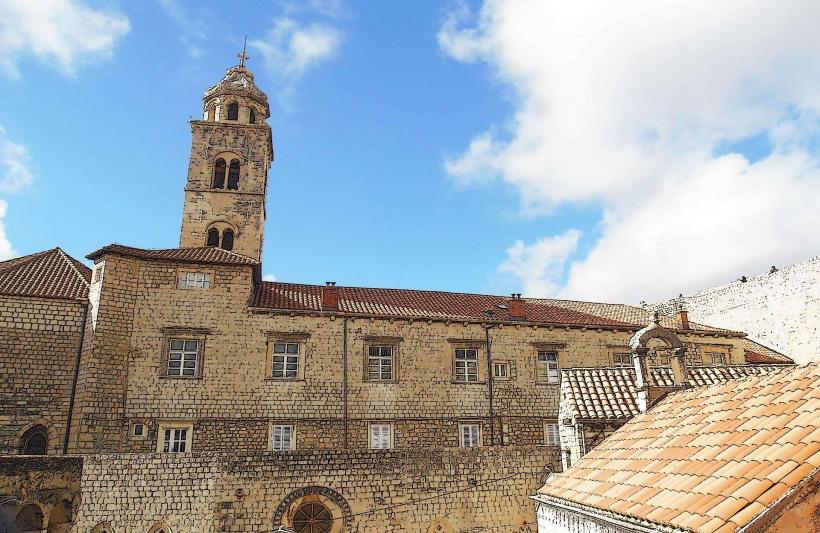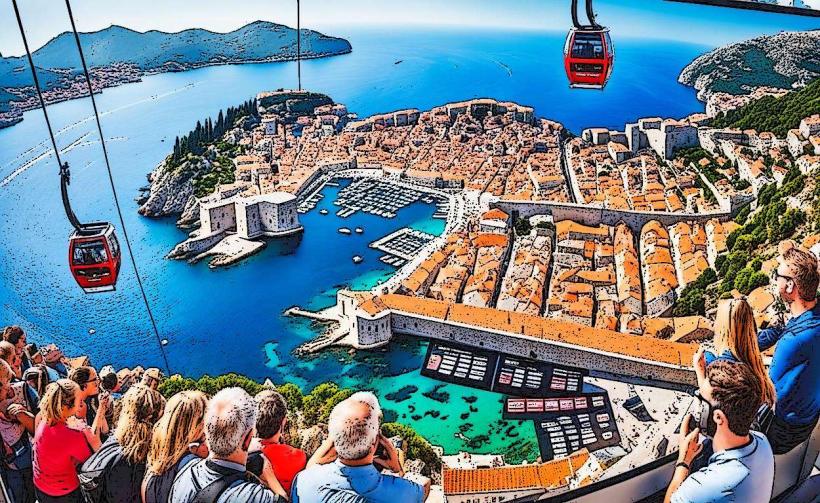Information
Landmark: Franciscan MonasteryCity: Dubrovnik
Country: Croatia
Continent: Europe
Franciscan Monastery (Franjevački Samostan) – Dubrovnik
The Franciscan Monastery (Franjevački Samostan) in Dubrovnik is another significant religious and cultural landmark, renowned for its stunning architecture, historical significance, and the serene atmosphere it offers visitors. Located near Stradun in the heart of Dubrovnik’s Old Town, the monastery is home to one of the oldest pharmacy collections in the world, as well as a beautiful cloister and church.
Historical Background
- Foundation: The Franciscan Monastery in Dubrovnik was founded in 1235 by the Franciscan Order, a Roman Catholic religious order established by Saint Francis of Assisi in 1209. The Franciscans were known for their dedication to poverty, simplicity, and service to the community. The Dubrovnik monastery quickly became an important center for spirituality and education in the region.
- Role in Dubrovnik's History: The Franciscan Order played an essential role in the Republic of Ragusa, the independent state that existed in Dubrovnik from the 14th to the 19th centuries. The monastery was not only a place of worship and reflection but also an intellectual center, contributing to the education and religious life of the city. Over time, the monastery became a symbol of the city’s connection to the broader Catholic world.
- Resilience: The Franciscan Monastery has withstood the test of time, surviving many challenges over the centuries. After the 1667 earthquake, which devastated much of Dubrovnik, the monastery was partially rebuilt, and many parts of it were restored to their former glory.
Architectural Features
- Facade and Exterior: The Franciscan Monastery is a striking example of Gothic architecture, with a beautiful Baroque-style church interior. The monastery’s stone facade is marked by a large arched doorway and rose window typical of Gothic design, while the clean, minimalist lines of the church interior reflect the simplicity and humility of the Franciscan Order.
- Church of St. Mary: The Church of St. Mary, which forms part of the Franciscan Monastery, has a remarkable Baroque altar and paintings from the Renaissance and Baroque periods. The interior is relatively simple compared to other churches in Dubrovnik but is nonetheless striking, with ornate altars and frescoes that contribute to the monastery’s serene atmosphere.
- Cloister: The monastery’s cloister is one of its most enchanting features. Surrounded by a colonnade of simple Gothic arches, the courtyard is a peaceful, tranquil space where visitors can reflect and enjoy the serene surroundings. The cloister is a haven of calm and offers a beautiful view of the gardens within the monastery complex.
- Monastery Walls: The monastery is enclosed by thick stone walls, providing both protection and separation from the busy streets of Dubrovnik. The walls reflect the defensive nature of many religious buildings in Dubrovnik, designed to shield the faithful from potential threats. Inside, however, the atmosphere is one of calm and contemplation.
The Pharmacy
- Historical Pharmacy: One of the most unique aspects of the Franciscan Monastery is its pharmacy, which is one of the oldest continuously operating pharmacies in the world. The pharmacy was founded in 1317, and it remains in use today, offering a glimpse into the medical practices of the past.
- The historic pharmacy is housed in a spacious room in the monastery, and visitors can view ancient medical books, pottery, and herbal remedies. The pharmacy’s collection includes various prescriptions, tools, and ingredients used by monks to prepare medicines for both physical and spiritual ailments.
- The Franciscan monks, who were often skilled in herbalism, botany, and pharmacology, were instrumental in providing care and healing to the people of Dubrovnik, particularly during times of plague and other health crises. The pharmacy is still an active part of the monastery today and provides a fascinating window into the past.
- Herb Garden: The herb garden of the Franciscan Monastery is another essential aspect of its historical significance. Monks grew a variety of herbs, many of which were used for medicinal purposes. Today, the garden continues to be maintained and serves as both a botanical and historical resource, showcasing the monastery’s long-standing connection to natural healing.
Art and Cultural Treasures
- Art Collection: The Franciscan Monastery houses a remarkable collection of artworks that reflect both religious themes and the rich history of the Republic of Ragusa. Many of the paintings and sculptures on display come from the Renaissance and Baroque periods.
- Notable works in the monastery’s collection include paintings by Italian and local artists, as well as sculptures that depict various scenes from the life of Christ and the Virgin Mary.
- The masterpiece of the monastery’s art collection is the crucifix by Pietro di Lorenzo, a renowned artist of the Renaissance period.
- Chant Manuscripts: The monastery also has an impressive collection of medieval manuscripts, including Gregorian chants and liturgical texts. These manuscripts provide insight into the religious life of the monks and their role in the city’s spiritual and cultural traditions.
Visiting the Franciscan Monastery
- Opening Hours: The Franciscan Monastery is typically open every day of the week, from morning until evening, but visiting hours can vary during holidays or special events. It is best to check the exact hours on the day of your visit.
- Admission: Visitors can access the monastery for a modest fee. The admission price usually includes entry to the church, cloister, and pharmacy, and visitors are welcome to explore the museum or take a guided tour for more insight into the history and significance of the monastery.
- Best Time to Visit: Like most of Dubrovnik’s attractions, the best time to visit is early in the morning or later in the afternoon, especially to avoid the busy crowds of peak tourist season.
- Accessibility: The monastery is located close to Stradun and Pile Gate, making it easy to find and access on foot. Visitors should be prepared for some stairs and uneven paths, typical of Dubrovnik’s medieval streets, though the monastery itself is accessible.
Nearby Attractions
- Stradun: Just a short walk from the Franciscan Monastery, Stradun is Dubrovnik’s main street, lined with cafes, shops, and historical buildings.
- Dubrovnik Cathedral: The Dubrovnik Cathedral, also known as the Cathedral of the Assumption of the Virgin Mary, is located nearby and is a beautiful example of Baroque architecture.
- Rector’s Palace: The Rector’s Palace, which housed the governor of the Republic of Ragusa, is another important historical landmark in the Old Town of Dubrovnik.
- Sponza Palace: Located near the Franciscan Monastery, the Sponza Palace houses the State Archives and is an excellent example of Renaissance architecture.
- Onofrio’s Fountain: A famous landmark, Onofrio’s Fountain is located near Pile Gate and is part of the city’s ancient water supply system.
Fun Facts
- Oldest Pharmacy: The Franciscan Monastery’s pharmacy is one of the oldest in the world, having been in continuous operation since 1317.
- Herbal Medicine: The monks of the monastery were skilled in herbalism and pharmacy, and their expertise was crucial during times of plague and sickness.
- Resilience in War: The monastery played an important role during the 1991 Croatian War of Independence, when Dubrovnik was besieged. Its religious and historical significance made it a symbol of the city’s resilience.
- Simplicity and Humility: The Franciscan Order is known for its dedication to poverty, and the design of the monastery reflects this, with its simple, yet beautiful Gothic architecture.
Why Visit the Franciscan Monastery?
- Historical and Religious Significance: The Franciscan Monastery provides insight into Dubrovnik’s long-standing religious and intellectual traditions, dating back to the 13th century.
- Art and Culture: With its impressive collection of Renaissance and Baroque artworks, as well as manuscripts and religious relics, the monastery offers a deep cultural experience.
- Unique Pharmacy: The historic pharmacy and herb garden provide a fascinating look at the medieval practices of medicine and healing.
- Peaceful Atmosphere: The monastery’s cloister and gardens offer a serene escape from the hustle and bustle of the Old Town, making it a perfect place for reflection.
Conclusion
The Franciscan Monastery in Dubrovnik is a remarkable site that combines spiritual significance, artistic treasures, and a long history of intellectual and medicinal contributions. Whether you’re fascinated by its role in the city’s past, intrigued by its historic pharmacy, or simply seeking a peaceful spot to reflect, the monastery offers an enriching and peaceful experience for all visitors.

